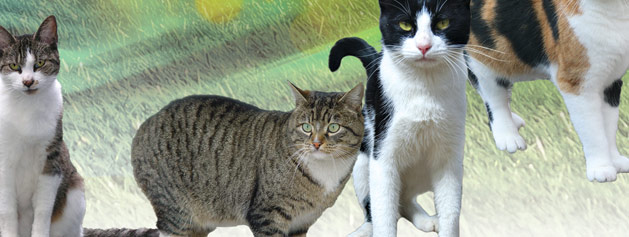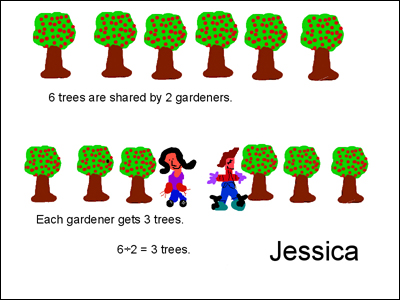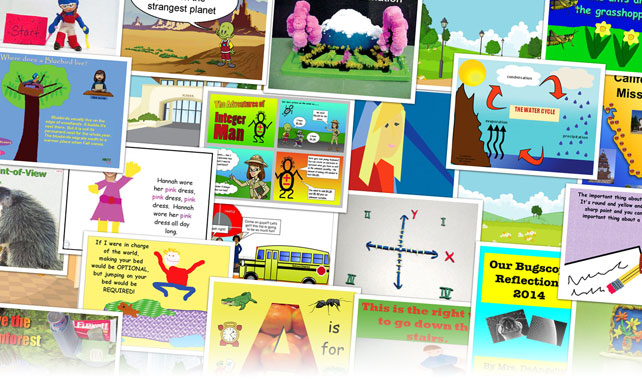

Recent studies have shown that students who know their multiplication tables are much better at math later in school and life. The Mathematix Book Company wants to begin creating interactive storybooks that teach multiplication to the general public. It has asked your class to come up with prototype books for multiplication by 2’s, 3’s, 4’s, 5’s, and 6’s.
Introduce the concept of skip counting to your students. A fun way to get them excited about skip counting and to practice their skills is to play with a rubber ball. Have the students take turns bouncing the ball and counting off by 2’s, 5’s, 10’s, etc.
Explain that skip counting is another way to multiply. Once the students have an understanding of skip counting, read Bunches and Bunches of Bunnies by Louise Mathews. This book explains the concept of multiplication using pictures.
Ask your students to illustrate this word problem:
Have the students share their pictures in small groups. Encourage them to notice that while the pictures are different, they still have the same numbers in them. Post them on the wall as examples.
Next, have students practice identifying numbers in pictures and writing multiplication word problems. Project Wixie or Pixie on a screen and insert the rain cloud sticker.
Continue this process with a few other Stickers. As an entire class, brainstorm everyday objects that work for multiplication word problems.
Ask the students to find an object at home that could be part of a multiplication word problem. When you meet again, have each student share their object with the rest of the class. You may even want to ask them to bring the object to school.
Let students know they will create a two-page project that showcases a multiplication word problem and it's answer. Letting each student choose their multiplication problem generally results in their choosing a level appropriate for their skill level.
Have students use a tool like Wixie to create a multi-page project that combines text and pictures to help students visualize the word problem.
Add a text box to type the word problem. Students can use the Image library and Stickers tab in Wixie to find images they can use for each multiplication problem.
Student select the Arrow tool, go to the Edit menu, and choose Duplicate to create a second copy of their page. Now they simply have to add the answer, instead of recreating their page a second time.
Once the students have completed their problems, its time to utilize their efforts. Wixie allow you to print projects as a table tent, which can be easily folded and displayed on students desks. Then, have students walk around the room and solve the problems they find, checking their work using the answer on the back side.
Combine individual student pages together using Wixie's Import Pages feature. Download a PDF version and share it, or the project URL with parents, so students can practice at home.

Assess basic multiplication skills from students’ skip counting ability and from other multiplication activities you use during the lesson. You can evaluate students’ skill at visualizing multiplication using their illustrated word problems.
The stickers each student chooses, their storyboard, and the multiplication problem they create will give you insight into how well they understand that word problems are just different forms of math problems.
Matthews, Louise. Bunches and Bunches of Bunnies. ISBN: 0590447661
Napoli, Donna J. and Richard Tchen. Corkscrew Counts: A Story About Multiplication. ISBN: 0805076646
Counting by 2's http://www.aaamath.com/cnt13b1-countby2.html
Counting by 5's http://www.aaamath.com/g25f2-countby5.html
Number & Operations in Base Ten Standard
Understand Place Value
2.NBT.2. Count within 1000; skip-count by 5s, 10s, and 100s.
Use place value understanding and properties of operations to perform multidigit arithmetic
3.NBT.3. Multiply one-digit whole numbers by multiples of 10 in the range 10-90 (e.g., 9 x 80, 5 x 60) using strategies based on place value and properties of operations.
Measurement & Data Standard
Represent and interpret data
3.MD.3. Draw a scaled picture graph and a scaled bar graph to represent a data set with several categories. Solve one- and two-step "how many more" and "how many less" problems using information presented in scaled bar graphs.
Writing Standards
Text Types and Purposes
2. Write informative/explanatory texts to examine and convey complex ideas and information clearly and accurately through the effective selection, organization, and analysis of content.
6. Creative Communicator
Students communicate clearly and express themselves creatively for a variety of purposes using the platforms, tools, styles, formats and digital media appropriate to their goals. Students:
a. choose the appropriate platforms and tools for meeting the desired objectives of their creation or communication.
b. create original works or responsibly repurpose or remix digital resources into new creations.
c. communicate complex ideas clearly and effectively by creating or using a variety of digital objects such as visualizations, models or simulations.
d. publish or present content that customizes the message and medium for their intended audiences.

Follow us on Instagram for daily inspiration

Create a thought web, timeline, flowchart, or other graphic organizer for a lesson

What can your students create?

Wixie
Share your ideas, imagination, and understanding through writing, art, voice, and video.

Rubric Maker
Create custom rubrics for your classroom.

Pics4Learning
A curated, copyright-friendly image library that is safe and free for education.

Wriddle
Write, record, and illustrate a sentence.
Topics